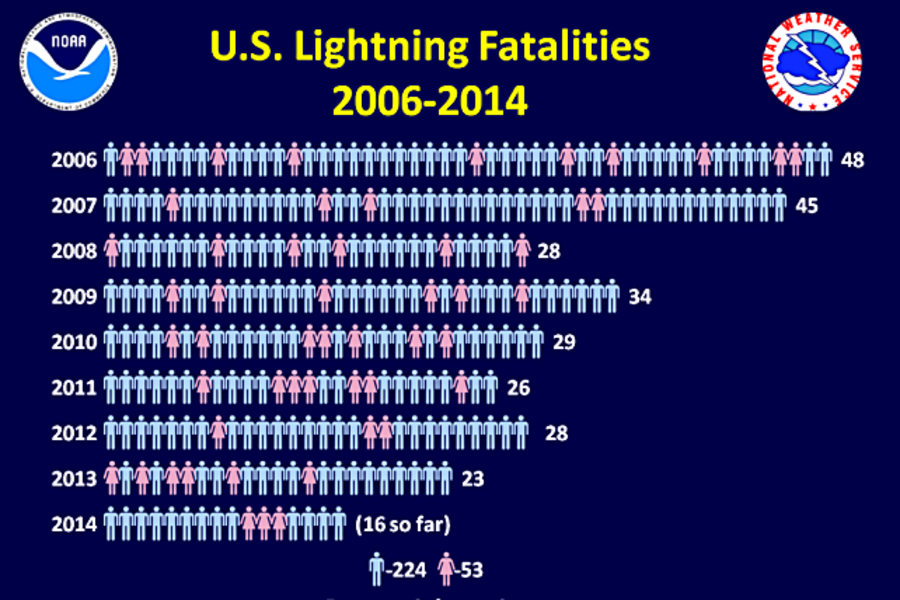Rare, fatal lightning strikes at Venice Beach
Loading...
Lightning fatalities are rare.
In recent years, the number of Americans killed by lightning strikes has been declining. It's down 52 percent since 2006, from 48 deaths to 23 in 2013, according to the National Oceanic and Atmospheric Administration (NOAA).
Meteorologists credit greater public awareness and better storm tracking technology. In fact, the National Weather Service office in Colorado is developing a Lightning Potential Index to help residents in the western state safely plan their outdoor activities.
Perhaps that's why the unusual fatal lightning strike on California Venice Beach Sunday is prompting such media attention. The National Weather Service said the beach was hit with four direct strikes. As The Los Angeles Times reported:
The midafternoon lightning strikes killed a 20-year-old man who was pulled from the water and injured at least seven others — one of them critically. The 15-minute thunderstorm struck as more than 20,000 people were visiting the southern portion of Venice Beach.
Bill Patzert, a climatologist with the NASA Jet Propulsion Laboratory, said the lightning strikes that hit the Southern California coast Sunday from San Diego to Venice are extremely rare. The West Coast has the lowest incidence of lightning strikes in the nation; the odds of being hit are 1 in 7.5 million in California compared to 1 in 600,000 in Florida, the nation's "lightning champion," he said.
The overall odds of being struck in a given year nationwide are 1 in 1.2 million, according to the National Weather Service. But the specific chances of being struck vary, based on geography, annual climatology, and personal hobbies.
A National Weather Service/NOAA analysis of lightning deaths from 2006 to 2013 showed that most victims were males in their 20s engaging in outdoor recreational activities. Contrary to popular myth, most strike victims were not golfers, but more likely to be camping, boating, or fishing enthusiasts. Soccer players were also more likely to be struck by lightning than golfers, perhaps an indication of how widespread awareness of the lightning threat is among golfers and golf course management. Fatalities typically peak in July and August.
Florida – the so-called “lightning capital” of America due to its humid geography– experiences the most fatalities, with an average of six deaths and 39 injuries annually.
Lightning strikes are rare in Southern California. “Because it’s so unusual, people are not sensitized to the dangers,” Bill Patzert, a climatologist with the NASA Jet Propulsion Laboratory told the Los Angeles Times.
Due to the increased risk during summer months, some local weather forecast offices have held lightning awareness campaigns.
As The Christian Science Monitor recently reported, one NWS office in Colorado has developed an experimental Lightning Potential Index. Updated every three-hours, the index relies on weather service radar to track severe weather patterns. It color-codes regions based on the low-to-extreme risk of lightning. The idea is to give Colorado hikers another planning tool.
Generally speaking, Mr. Patzert said that people should heed the National Weather Service’s warnings. If stuck out in the open, the National Weather Service website advises:
If camping, hiking, etc., far from a safe vehicle or building, avoid open fields, the top of a hill or a ridge top. Keep your site away from tall, isolated trees or other tall objects. If you are in a forest, stay near a lower stand of trees. If you are camping in an open area, set up camp in a valley, ravine or other low area. Remember, a tent offers NO protection from lighting. If you are camping and your vehicle is nearby, run to it before the storm arrives.
Stay away from water, wet items such as ropes and metal objects, such as fences and poles. Water and metal are excellent conductors of electricity. The current from a lightning flash will easily travel for long distances.








